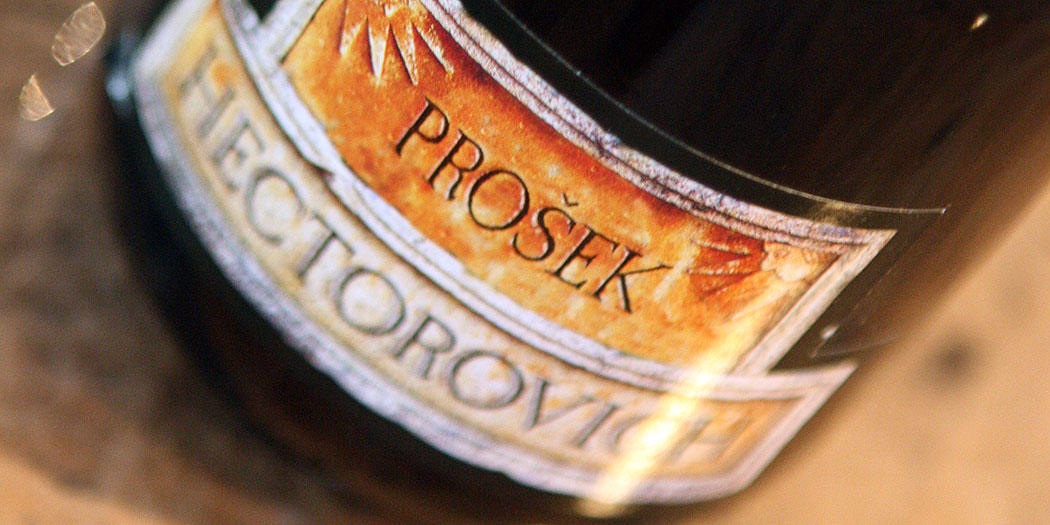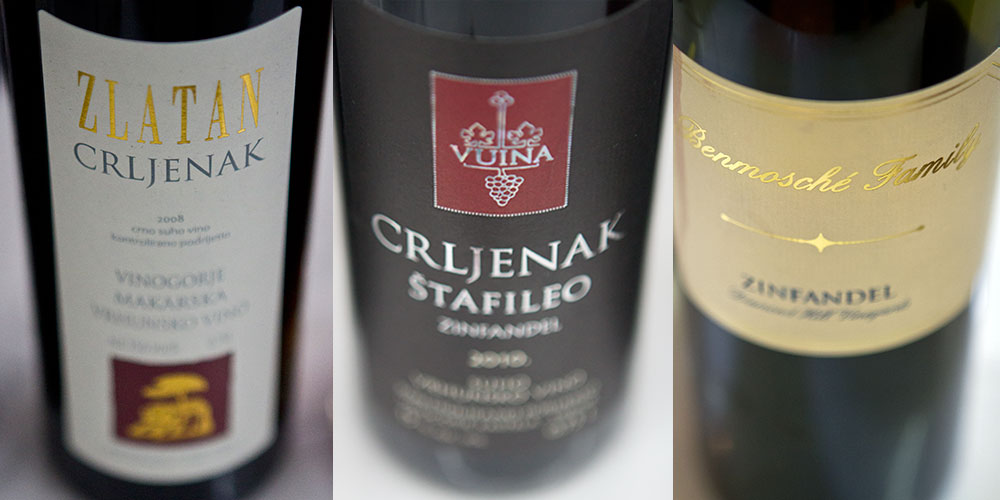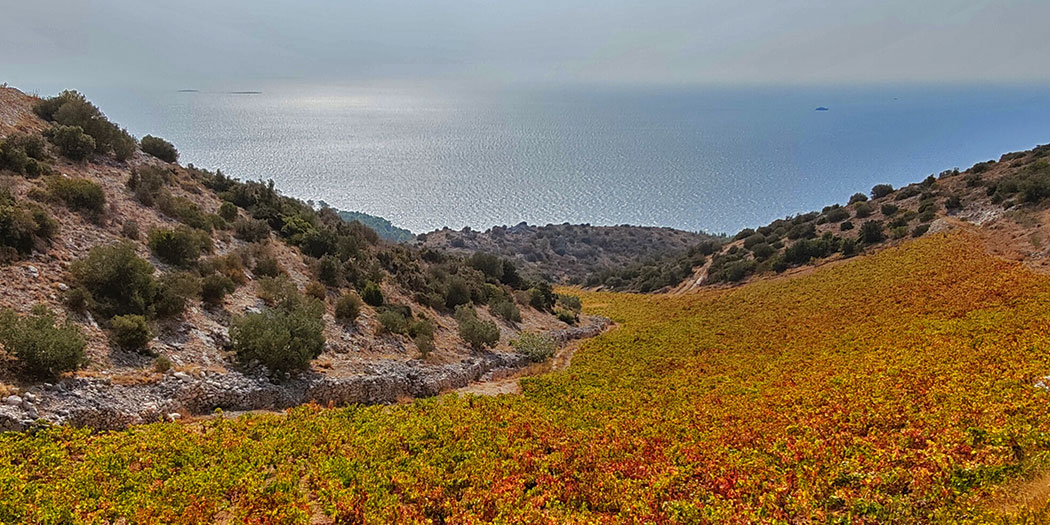It’s often the case that Dalmatian Prošek is confused with Italian Prosecco, but they are nothing alike (Prošek is a sweet, dessert wine while Prosecco is a sparkling wine) and they share no grapes in common. In all our travels, we have yet to get a firm translation of Prošek, although the roots appear to come from the Croatian adverb “prošli” meaning “late”. That š is quite important though as “prosek” is a different word that means “average” in Croatian. Any expansion on the definition by hardcore linguists is naturally welcome.
My first exposure to the wine was in the form of the Prošek sold all over the place by Croatian wine conglomerate, DalmacijaVino which, at 12€ for a one liter bottle is the absolute cheapest bottle of the wine you’ll find. It’s somewhere between bleah and mildly-tolerable, but it’s not the level of wine you get from smaller producers, although the drinking experience can be greatly enhanced while sipping it chilled on the old walls of Dubrovnik on a hot summer night as I did.
A later experience of Prošek proved to be a great deal more fulfilling. When in Jelsa, Hvar doing research for the Dalmatia wine guide, we stayed with an old couple who rented part of their house. When sitting down to negotiate a long term stay in a random mix of Croatian, Italian, and German between us, the wife pulled out an unmarked bottle and poured a small glass for us. The sun was scorching that day and I paid little attention to the amber color and was thus expecting the raw burn of high-octaned Šljivovica. I was pleasantly surprised to have my palate graced by the wonderful, nuanced sweetness of Prošek instead.
Once we settled on rent, I pressed the wife as to where she picked up this bottle to which she shrugged and said her family had made it. And, that’s usually the case with Prošek as the process is arduous and not terribly profitable. Much as other dessert wines are made, this one is created via the straw wine or ‘passito’ process which has been with us for thousands of years. The grapes are left to sit off the vines for about a week to increase the concentration of sugar. Then, they’re crushed and fermentation takes place with the resulting sweet wine having an alcohol of 15-17%.
Apparently if the target 120g of sugar is not reached, sugar will be added as due to the Croatian Wine Act, there are specific minimums that the wine has to reach in both alcohol and sugar, although these being “specijalno vino” they fall under a nebulous classification. In the past, large producers (and even some small ones) were artificially adding sugar and alcohol to regular wine to achieve the same effect due to the higher price Prošek garners, but the practice is claimed to have been all but eliminated.
Somewhat similar to Bermet in Serbia, there isn’t really any one specific blend for Prošek, but the most common grapes used are Bogdanuša, Maraština, Grk, and Vugava which are all native Croatian grapes. In some higher-end versions, a bit of Plavac Mali is blended in as well to achieve more of a Port or Jerez-like result. Some say that the best blend is considered to be one of Plavac Mali, Bogdanuša, and Vugava.
Due to this “secret sauce” approach to making the wine, flavors and characteristics vary a great deal. In general, the wine is obviously quite sweet and meant to be had in small amounts. Flavors of almonds and other floral elements can arise from it. The body is thick on the palate and has a lingering, honey finish. It is also quite able to capture elements of the locale in which the grapes came from, such as in Hvar you can sometimes detect a hint of lavender… or maybe even sunburned tourist.
As noted earlier, it isn’t the most profitable wine to make. It takes anywhere from 8-10 times the amount of grapes to produce Prošek than a regular wine. That said, most of the Dalmatian wine producers will have at least a little on offer, but it isn’t cheap. Tomić, Plančić, and Plenković in Hvar as well as Bartulović in Pelješac all have very nice Prošeks readily available for sale. They generally start at around 40€ for a small, 375ml bottle, so you probably won’t be buying that much. But, a little Prošek goes a long way and is an oft-overlooked dessert wine in Europe that anyone should try given the chance.



Any idea where Prosek can be bought in the UK?
In the UK, no. Even in the US, there’s really only the quite terrible DalmacijaVino atrocity. Hopping a budget flight down to Split from the UK and picking up a case in a market there would probably be the most economical as it can be quite pricy for the good stuff.
Excellent article!
But you misinterpreted two things so let me correct you.
You stated that word “prosek” (regular s) means “average” in Croatian. That is not correct, Croatian doesn’t have such word, nor does this word to Croatian speaker allude to what you said.
Another remark. You also stated that you expected “Sljivovica” on island Hvar. One should never expect that in the middle of Adriatic. Sljivovica is brandy made from prunes and thus typical for the continent, more specific to deep inlands. You mixed it up with “rakija” or wine brandy oftenly translated “grappa”.